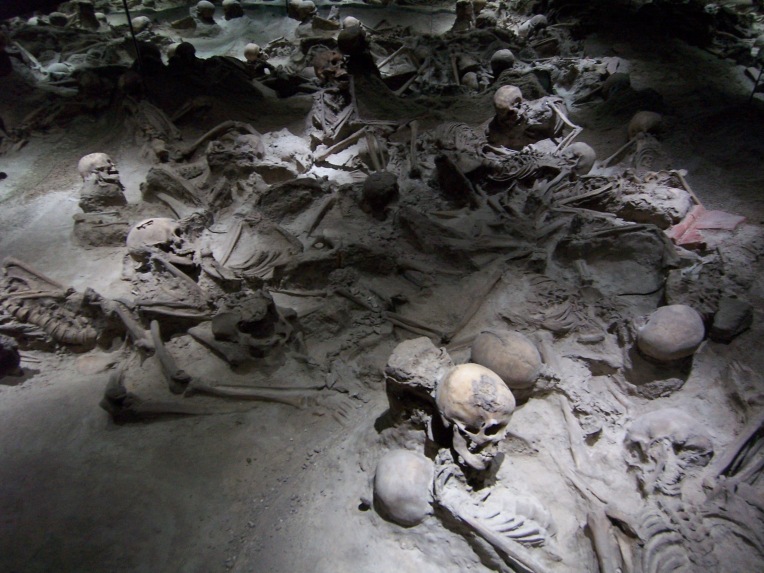Herculaneum was a prosperous resort town inhabited in summer by well-to-do Romans and their servants, in addition to the year-round resident.
When the Vesuiuv erupted in 79 A.D. they were all there for the season: aristocrats and slaves, young and old.
They fled the volcano’s eruption at the very last minute and were caugh on the beach by the flow of volcanic material.
Since few skeletons had ever been found in the town itself, historians long believed that the population had escaped the desctruction of the city.
It was a great surprise when the skeletons were accindentally found at the beach front of the adjacent chambers in the spring of 1982.
These skeletons are in good to excellent condition because they had remained in an environment of unchanging temperature and humidity, buried under 20 meters of volcanic material for some 1900 years.
The skeletons of Herculaneum are of utmost importance to anthropologist and historians, because they constitute a unique population: Romans of the time generally cremated their dead.

The state of health of the inhabitants of Herculaneum
Thanks to the discovery of the skeletons was possible to study the state of health in the time of death.
The skeletons of 139 Herculaneans (51 males, 49 females and 39 children) trapped by the volcanic eruption of Mt. Vesuvius in A.D. 79 were studied by observation, measurement and chemical analysis.
In general, this population had excellent teeth with few lesions and edge-bite occlusion. Twenty-seven percent had some degree of hypo plastic lines in the dental enamel, suggesting that childhood illnesses were common.
The ancient population was taller than modern Neapolitans, but shorter than modern Americans. Also, their children grew at a slower rate than Americans of the same ages.
Biochemical analysis suggests that their diet was more dependent on sea fish than on red meat. Lead analysis shows slightly higher values for the adult male population than for the females.
Some degree of arthritis was apparent in 42% of the population. Traumata occurred to 22.7% of these people. Signs of healed anemia in any degree are present in 34.1%; etiology could have been nutritional deficiency or heterozygotes thalassemia. Two individuals and their pathologies are presented: one case of congenital bilateral hip dysplasia and the other of healed rickets.



